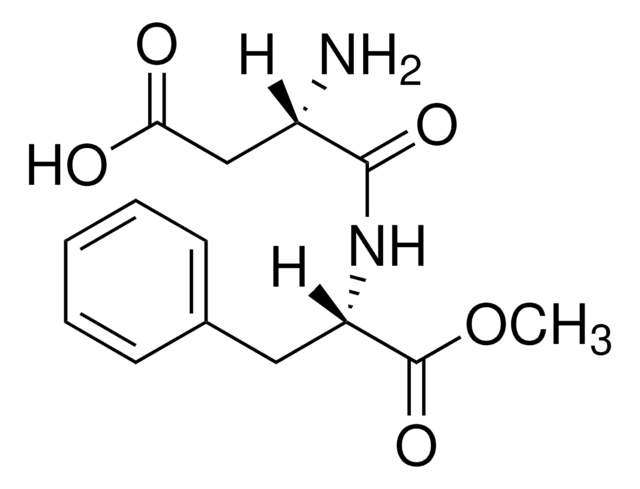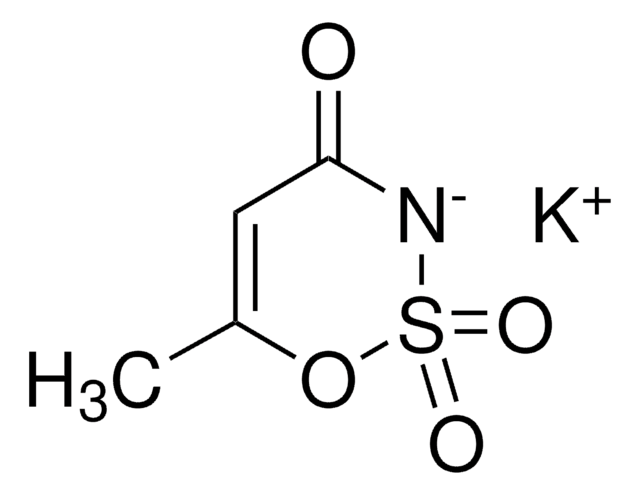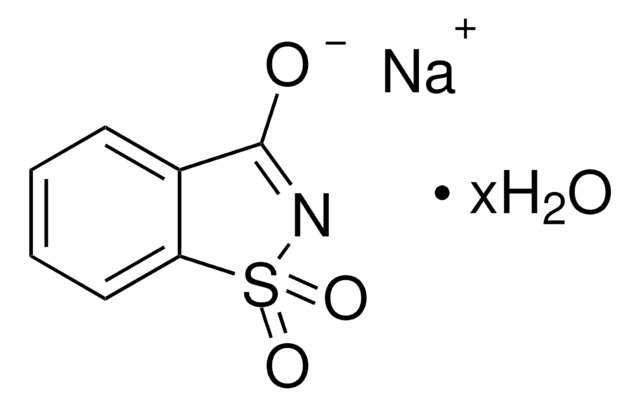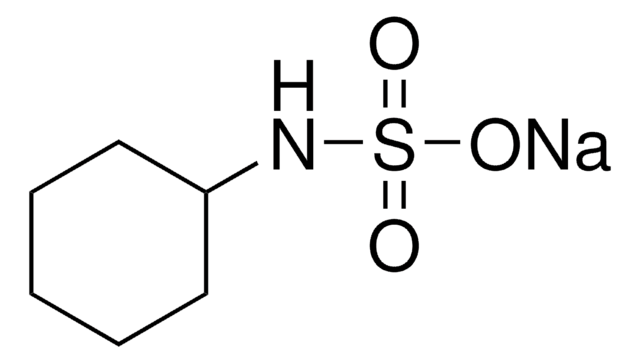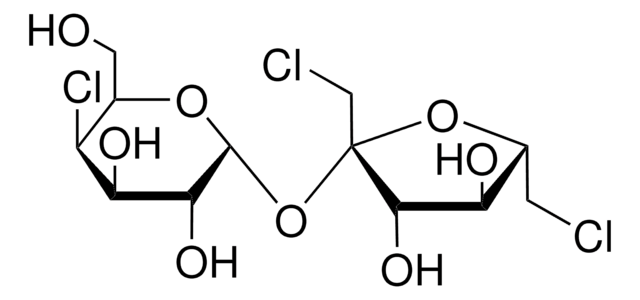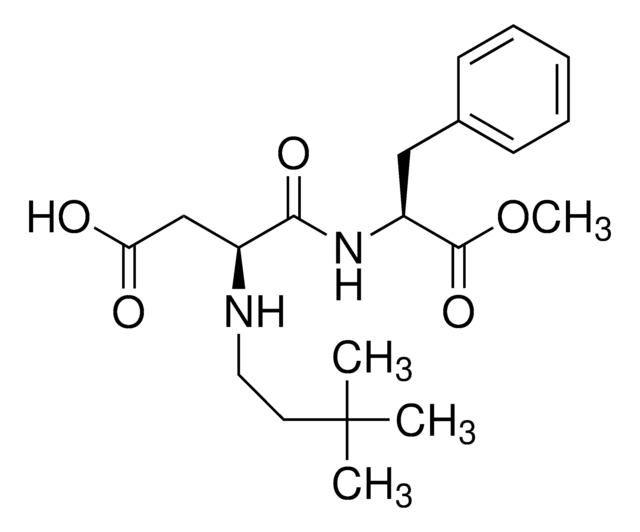所有图片(1)
About This Item
经验公式(希尔记法):
C4H4KNO4S
CAS号:
分子量:
201.24
Beilstein:
3637857
EC號碼:
MDL號碼:
分類程式碼代碼:
12164500
PubChem物質ID:
NACRES:
NA.21
推荐产品
生化/生理作用
无中毒或致癌作用的新型热稳定性甜味剂。Tas1r3 基因的等位基因突变影响了对该分子的行为性味觉响应,表明它是 T1R3 受体配体。
儲存類別代碼
11 - Combustible Solids
水污染物質分類(WGK)
WGK 1
個人防護裝備
Eyeshields, Gloves, type N95 (US)
其他客户在看
Wei-Li Li et al.
Journal of molecular neuroscience : MN, 51(1), 225-236 (2013-04-23)
The sweet taste is of immense interest to scientists and has been intensively studied during the last two decades. However, the sweet preference modification and the related mechanisms are still unclear. In this study, we try to establish a mice
Mi-Sun Ha et al.
International journal of food sciences and nutrition, 64(6), 715-723 (2013-05-02)
Using a stepwise assessment of the exposure of Korean consumers to acesulfame K and sucralose, theoretical maximum daily intakes of the sweeteners were calculated using the Budget screening method, which resulted in values greater than the acceptable daily intakes (ADIs).
In search of a role for carbonation: is this a good or bad taste?
Catia Sternini
Gastroenterology, 145(3), 500-503 (2013-07-31)
Francesco Di Salle et al.
Gastroenterology, 145(3), 537-539 (2013-05-30)
Little is known about how CO2 affects neural processing of taste. We used functional magnetic resonance imaging to investigate the effects of carbonation on brain processing of sweet stimuli, which has relevance to studies of food selection and satiety. The
Hao Jin et al.
Cell, 184(1), 257-271 (2021-01-09)
Hardwired circuits encoding innate responses have emerged as an essential feature of the mammalian brain. Sweet and bitter evoke opposing predetermined behaviors. Sweet drives appetitive responses and consumption of energy-rich food sources, whereas bitter prevents ingestion of toxic chemicals. Here
我们的科学家团队拥有各种研究领域经验,包括生命科学、材料科学、化学合成、色谱、分析及许多其他领域.
联系技术服务部门